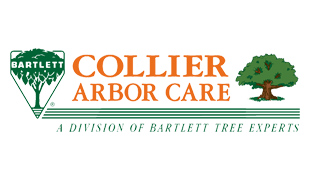|
Current Issue - Spring/Summer 2013 Show Back Issues |
|
||
 Cottony maple scale may be found on currants, gooseberry, grapes as well as maples.
Cottony maple scale may be found on currants, gooseberry, grapes as well as maples.
Scale Insects - A Hard to Recognize DangerScale insects can be serious pests on all types of fruit and ornamental trees and also shrubs. Scales are so unusual looking that most people don't recognize them as insects. Most adult scales do not move, they look like brown or white "tortoise shells" on branches or foliage. Some are covered with a white waxy substance. Scales have piercing mouthparts that suck juices out of the plant. Severe infestations of scale can cause overall decline or even death of the plant. Most scales excrete sticky honey dew that can drip down onto cars and buildings and make a gummy mess. Often this honeydew is attacked by a black sooty mold.  Azalea bark scale shown on an azalea also may be found on rhododendrons.
Azalea bark scale shown on an azalea also may be found on rhododendrons.
Some scales have only one generation per year and others can have multiple generations. Typically scales over winter as an adult scale. Then in late spring eggs are produced hidden under the mother scale. The eggs hatch in late spring and early summer into tiny microscopic crawlers. These crawlers walk over plant surfaces, get blown by wind to new trees or moved by birds. Scales are often kept in check by natural enemies like parasitic wasps. However scale populations can sometimes get out of control and cause plant damage or be a nuisance with sticky honeydew. Well timed sprays of oil during the dormant season and when crawlers are active should provide good control. Fall Recovery Program for Stressed LawnsDuring the hot and sometimes dry summer months, our lawns suffer through weather-related stress factors that can cause damage ranging from leaf wilt to pre-mature dormancy. Weather conditions such as inadequate precipitation, high temperatures, and heavy foot traffic put a heavy burden on turf grasses ability to perform maintenance activities such as root production, nutrient storage and blade growth. Lack of adequate soil moisture due to soil compaction and isolated dry spots can lead to scorched roots, turf thinning and an increased susceptibility to insect and disease problems. A rapid turn around in turf health and vigor can be initiated with the application of balanced fertilizer and increased watering to help stimulate root and blade growth while encouraging turf density. A key factor in improving turf health is aerification. Core aeration loosens compacted soil, improves water and air movement through the rooting zone and provides spaces for new roots to grow. Our summer turf recovery program of core aeration followed by fertilization including a mycorrhizae root stimulant treatment along with increased watering will help to begin the recovery process for your summer-stressed lawn. Contact one of our staff members for more information. |

A Portugal Laurel hedge - better than an English Laurel hedge - can form a nice, natural border. Hedge Plants: Alternatives to ArborvitaeOne of the most common uses for shrubs is for hedges and screens. And the first plant that usually comes to mind is Arborvitae. Please think again! It is way over planted, ravaged by spider mites, dies from root rot, and can't grow in shade. Yes, we admit to having a plant prejudice, but when we see Arborvitae problems time and again we want to educate folks about better alternatives. So, yes there is a cure to the arborvitae curse. Some questions you need to ask before selecting your perfect hedge are: With hedges, you need to be committed to regular maintenance, which means an annual shearing. We often get asked to bring a 20-foot tall arborvitae hedge back down to 10-feet. Unfortunately, such a dramatic pruning would destroy the hedge. Most hedges are best maintained at 8-10 feet tall. This is the height that most people can easily and safely maintain their hedges and still get the desired screening. When shearing, remember to prune so the top is narrower than the base. This is to insure that all parts of the hedge receive sunlight. Otherwise the bottom becomes shaded and bare. For a healthy, manageable hedge, you should plan on a regular maintenance program of annual or even bi-annual shearing. The following evergreen shrubs are amenable to shearing and thus make good 8-10 foot tall hedges: 
A sunken canker on branches is a telltale sign of seiridium canker disease. 
Brown foliage on a Incense Cedar tree infected with seiridium canker. New Killer: Seiridium CankerThis is a fairly new disease that has been infecting Incense cedar trees in our region. The disease has been causing a severe branch dieback. Severities of dieback vary from tree to tree, but upwards of 60% of branches are killed. The fungus is mainly transmitted by wind blown spores on rain wetted branches and foliage. Drought stressed trees seem to be the most susceptible. The disease can infect many different kinds of trees like cedars and junipers but in our area it is mainly incense cedars. Symptoms: Control: Featured Tree: Parrotia (Parrotia persica)Ever imagine having all the breath-taking colors of fall, including red, orange, yellow, scarlet and purple in your landscape? How about having all that color being displayed by one tree? The Parrotia is that tree known for its spectacular show of color in the fall. 
Fall color in the leaves of the Parrotia. 
A mature Parrotia tree. Introduced to the United States in the mid 1800's from the Middle East, the Parrotia has had a slow start being planted in the American landscape. The Parrotia is a medium sized tree growing to heights of 20'- 40' with a canopy spread of 15'-30'. The trunk can be single or multi-stemmed. The leaves are oval to oblong and 2"-4" long. The leaves of the Parrotia display an array of color through the 3 seasons from light green to purple in the spring, dark green in the summer and an explosion of color in the fall. Once the leaves are shed for winter, the bark of the Parrotia becomes the main attraction with multi-layered, exfoliating bark with its own display of colors. The Parrotia is a low maintenance specimen tree with no real insect or disease issues and likes to be planted in well drained soil and full sun to semi-shaded locations in the landscape. The Parrotia will be the tree that gets all the attention in the fall. Oregon Ethics AwardCollier Arbor Care was a proud finalist for the 2004 Oregon Ethics in Business award in the "Business" category. We work hard to earn your trust. |
|
Home |
Services |
The Arbor Advisor |
Garden Calendar |
About Us |
Fact Sheets |
Contact Us |
Site Map Collier Arbor Care Portland 503-722-7267 Vancouver (360) 693-6056 Site contents and design ©2013 Collier Arbor Care |







 top »
top »